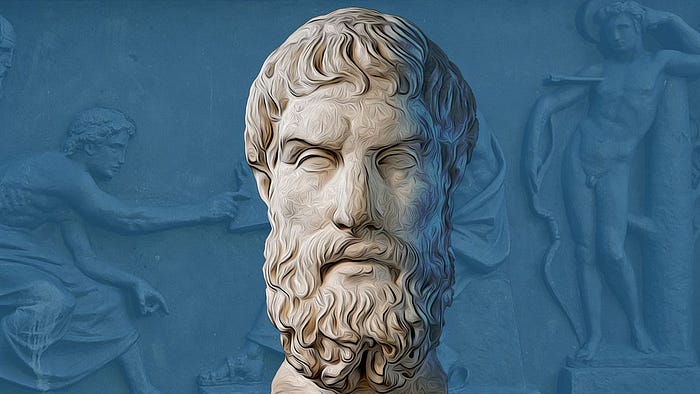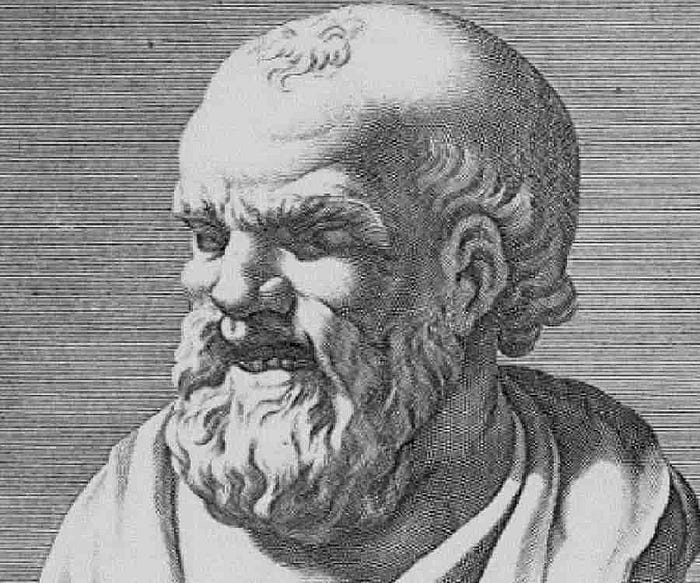
Unveiling the Origins of Science
Science, as we know it today, owes a great debt to the extraordinary thinkers of ancient Greece. This remarkable civilization, flourishing in the Aegean region of the Mediterranean around 2,500 years ago, laid the groundwork for the scientific revolution that would follow. While they may not have been observational scientists per se, the philosophers of ancient Greece conceptualized remarkably prescient ideas about nature and the universe. However, their ideas were not always in harmony, as they diverged in their theories.
Epicurus and the Possibility of Life Beyond Earth
Epicurus, one of these philosophical visionaries, posited an intriguing notion that resonates with modern astrobiology. He proposed the existence of infinite worlds, both resembling and differing from our own. Speculating about the presence of creatures, and potentially intelligent beings, on these worlds, Epicurus made a strikingly modern statement. His musings echo the curiosity and inquiries of contemporary scientists seeking signs of life beyond our planet.

Aristotle’s Earth-Centric View
Contrasting with Epicurus, Aristotle, the dominant philosopher of his time, believed in the uniqueness of Earth. According to his perspective, our world stood alone, with no other celestial bodies similar to it. As Aristotle’s influence prevailed, the concept of Earth’s uniqueness gained traction and became deeply ingrained in the collective consciousness. Consequently, the idea of Earth as the esteemed centerpiece of the universe took hold and endured throughout history.

Greek Contributions Beyond Science
While the ancient Greeks made extraordinary contributions to science, their impact extended far beyond the realm of scientific inquiry. They left an indelible mark on various fields, including philosophy, logic, politics, law, and the arts.
Philosophy and Logic: Foundations of the Scientific Method
Philosophy and logic formed the bedrock of the scientific method, which has since become the cornerstone of scientific investigation. The Greeks’ intellectual pursuits in these disciplines laid the groundwork for critical thinking, reasoning, and hypothesis formation, guiding future scientists in their quest for knowledge.
Government, Law, and City States: A Blueprint for Modern Systems
The Greeks also provided groundbreaking insights into systems of government, law, and the city-state. Their ideas on democracy and the rule of law still resonate today, shaping the political landscapes of numerous nations worldwide.
Theater, Music, and the Arts: Enduring Legacies
The artistic prowess of the ancient Greeks remains evident in theater, music, and the arts. Their dramatic plays, musical compositions, and aesthetic principles continue to inspire and captivate audiences, demonstrating the timelessness of their creative vision.
Medicine and Mathematics: Precursors to Modern Concepts
Although some of their medical theories may seem antiquated, the ancient Greeks laid the groundwork for modern medical knowledge. They established the rudiments of empirical observation and introduced concepts that would later evolve into more advanced medical practices.
In the realm of mathematics, the Greeks revolutionized the field. They developed the foundational principles of geometry and algebra, unlocked the concept of infinity, and even introduced the notion of irrational numbers. These breakthroughs in mathematics set the stage for centuries of mathematical advancements.
An Expansive View of the Cosmos
Despite limited travel experiences, the ancient Greeks possessed a remarkable understanding of the natural world. They recognized that the Earth was spherical, speculated that the Sun surpassed our planet in size, and conceived of a vast universe far beyond the bounds of Earth itself. Such visionary ideas, born from a mobile and intellectually open society, challenged the prevailing beliefs of their time.
Unraveling the Greek Genius
The question arises: How did the ancient Greeks manage to conceive such revolutionary ideas far ahead of their time? Although the exact reasons remain elusive, certain factors may shed light on their intellectual accomplishments.
Mobility and Trade: Catalysts for Novel Ideas
Unlike the rigid civilizations of Greece’s contemporaries in Mesopotamia and Babylon, the Greeks were a mobile society deeply engaged in trade and commerce. Their interactions with diverse cultures and exposure to new ideas, artifacts, and technologies fueled their intellectual curiosity. To thrive in their trade-dependent existence, the Greeks embraced the necessity of being open to fresh concepts.
The Power of Rational Thought
Above all else, the ancient Greeks esteemed thought and rationality. They placed great value on intellectual exploration and implemented it in all facets of their society. Their devotion to reason provided the impetus to analyze and understand the patterns of nature through mental models.
A Nimble Society with Democratic Principles
Despite their reliance on slaves, the ancient Greeks embodied a nimble society. Their small size allowed for effective governance, enabling a democratic implementation of the rule of law. This social structure fostered an environment conducive to intellectual pursuits and scientific inquiry.
The Birth of Mental Models
The key differentiator for the Greeks was their ability to construct mental models of the natural world. While other civilizations may have observed celestial motions and recognized patterns, they failed to transcend the empirical and construct abstract concepts. The Greeks, on the other hand, utilized mathematics as a tool to grasp the underlying patterns of nature in an abstract manner, paving the way for the rudimentary foundations of the scientific method.
In retrospect, the ancient Greeks’ contributions to science and various other fields were nothing short of extraordinary. Their intellectual legacy continues to shape our understanding of the world, inspiring future generations to embrace the pursuit of knowledge with open minds and logical reasoning. As we delve into the annals of history, we are reminded that the roots of modern scientific exploration trace back to these pioneering thinkers, forever immortalized as the vanguards of human curiosity and innovation.
The Egyptian Influence on Mathematical Surveying
Mathematics, an integral part of ancient civilizations, played a crucial role in practical applications as well. The Egyptians, known for their ingenuity, employed surveying techniques in the Nile Valley, where annual floods erased property boundaries. To resurvey the plots of land in the Nile Delta accurately, they devised a unique method. Using loops of rope with knots corresponding to perfect triangles, they constructed right-angle triangles. One of the most famous examples is the Pythagorean triple: 3 squared plus 4 squared equals 5 squared, which formed a perfect right-angle triangle. By stretching these ropes into various right-angle triangles and establishing a rectilinear grid, the Egyptians adeptly managed the land each year.

Pythagoras: From Lobes to Theorems
While the Egyptians focused on specific cases, the Greeks, led by the brilliant mathematician Pythagoras, ventured into the realm of generalization. Pythagoras noticed that the warehouse of rope loops the Greeks maintained never extended to the general case. This observation inspired him to formulate the Pythagorean theorem, a groundbreaking mathematical concept. The theorem states that in a right-angle triangle, the square of the hypotenuse (the side opposite the right angle) is equal to the sum of the squares of the other two sides: a squared plus b squared equals c squared. With this abstract algebraic representation, Pythagoras transcended the specific cases and delved into the general principles governing right-angle triangles.

Pythagoras: A Mathematical Visionary
Pythagoras recognized the significance of his theorem, understanding the profound implications it held for mathematics. Legend has it that upon conceiving the theorem, Pythagoras sacrificed 100 oxen to the gods, a testament to his recognition of its groundbreaking nature. Despite facing adversity, Pythagoras and his followers persevered. They resided on an island in the Aegean Sea, driven from their Greek homeland, with potential threats to Pythagoras’ life should he return. The legacy of Pythagoras and his teachings has been passed down through his followers and their descendants, as none of his original writings have survived. His ideas pushed the boundaries of mathematical understanding, extending to the belief that the universe itself is a mathematical entity — a notion that aligns strikingly with modern theories like general relativity and string theory, which seek to explain the fundamental nature of the cosmos.
Mathematics Meets Logic: Earth’s Roundness Revealed
The Greeks, renowned for their logical reasoning, made a remarkable discovery about the shape of the Earth — one that defied the conventional knowledge of their time. Despite having limited travel experiences, the average educated Greek possessed a keen understanding that the Earth was round and had an estimation of its size. This revelation stemmed from the observation of lunar eclipses, where the Earth’s shadow gracefully travels across the moon’s surface. By discerning the illumination of the Earth, the Sun, and the Moon during these celestial events, the Greeks deduced that the Earth projected a circular shadow onto the moon. Reasoning that only a sphere, regardless of its orientation, casts a circular shadow, they concluded, with logical certainty, that the Earth itself must be a sphere.

The Marriage of Logic and Mathematics
The convergence of logic and mathematics among the ancient Greeks was not limited to practical applications or celestial observations. It pervaded all realms of scientific inquiry, laying the groundwork for the scientific method itself. From Pythagoras’ abstract algebraic formulations to the logical deductions regarding Earth’s shape, the Greeks exemplified the power of combining logical reasoning with mathematical principles.
Measuring Earth’s Dimensions: Shadows and Geometry
The Greeks’ astute observations and mathematical acumen allowed them to determine the size of the Earth — an impressive feat considering their limited technological resources. By capitalizing on a particular phenomenon, they deduced Earth’s dimensions with surprising accuracy. On a specific day when the sun cast no shadow at a particular time and place, the Greeks made the same observation at a known distance away — several hundred miles apart. Comparing the angles of the shadows cast by the Earth at these two locations, along with the known distance between them, they employed simple geometry and the concept of similar triangles. Through this method, they inferred the diameter or circumference of the Earth. Although their linear distance measurements may not have been highly precise, the principle they employed was valid, leading the Greeks to possess a reasonably accurate knowledge of Earth’s size, with an error margin of about 5%.
The Greeks’ Speculation on Heliocentrism
Even before the groundbreaking discoveries of Copernicus, a Greek thinker, yet unnamed in the text, contemplated a heliocentric model of the universe. By using logical reasoning and astute observations, this philosopher postulated that Earth was larger than the moon yet smaller than the sun. This hypothesis served as a catalyst for considering a heliocentric model, which placed the sun at the center of the solar system. These remarkably modern notions, proposed by a Greek thinker over two millennia ago, foreshadowed future developments in our understanding of the cosmos.

Profound Questions and Thought Experiments
The ancient Greeks were not only renowned for their mathematical and scientific prowess but also for their profound philosophical inquiries. Two examples illustrate the depth of their contemplations.
Archytas and the Infinite Universe
Archytas pondered whether the universe was finite or infinite — an inquiry that continues to captivate the minds of contemporary cosmologists. To explore this question, he devised a thought experiment involving a warrior carrying a spear who ventured to the edge of the universe, wherever that may be. The crux of the matter lay in the outcome: Would the spear travel indefinitely into an unknown void, or would it encounter a boundary or barrier? Archytas reasoned that if there were a container or boundary, there must be something else containing it. Thus, he concluded that it was more rational to envision the universe as infinite. During that era, the dominant idea among Greek philosophers was that of an infinite universe — an intriguing concept that would echo in the annals of scientific exploration.
Democritus and the Indivisible Atom
Another visionary philosopher, Democritus, embarked on a thought experiment exploring the nature of matter. He imagined repeatedly cutting a stone into smaller pieces until reaching a point where further division would yield infinitesimally small subunits. Democritus contemplated two possibilities: either an ultimate invisible, indivisible entity — what he termed an “atom” — or an infinite progression of ever-smaller particles. In his logical analysis, Democritus concluded that an infinite progression was the more plausible scenario. He hypothesized the existence of atoms and inferred that the properties we ascribe to normal matter, such as texture, smell, and taste, were secondary characteristics not inherent to the individual atoms themselves. Remarkably, Democritus arrived at this concept of atoms — a central pillar of modern atomic theory — centuries before experimental evidence could substantiate his claims.

The Geocentric Model and Astronomical Enigmas
Despite their progressive views on space and time, the Greeks faced a conundrum when it came to the geocentric model — an understanding that Earth stood at the center of the universe. Aristotle, the dominant philosopher of the time, staunchly defended this belief, reasoning that if Earth were in motion, its inhabitants should perceive motion. The Earth’s rotation, particularly at specific latitudes, would entail a velocity of approximately 700 miles per hour — a motion that would be perceptible. Therefore, Aristotle considered the Earth’s motion to be implausible, leading him to affirm Earth’s stationary and central position in the cosmos.

However, the geocentric model faced a challenge posed by the planets’ peculiar behavior, particularly Mars, Jupiter, and Saturn. During their regular motion through the fixed pattern of stars, these planets occasionally appeared to reverse course for several months before resuming their usual trajectory — an anomaly known as retrograde motion. This phenomenon puzzled the ancient Greeks, as the geocentric model failed to provide a natural explanation for this irregular behavior. The mystery of retrograde motion would persist until the Copernican revolution breathed new life into the exploration of our place in the universe.

Ptolemy and the Preservation of Ancient Knowledge
Ptolemy, an influential thinker of approximately 100 AD, sought to consolidate the astronomical knowledge of the ancient world. His monumental 47-volume encyclopedia, known as the Almagest, compiled and preserved the accumulated wisdom of the Greeks. Throughout the dark ages and the subsequent medieval era, this compilation served as a crucial repository of astronomical knowledge, as scientific progress stagnated.
The Ptolemaic Model: A Geocentric Conundrum
The prevailing cosmological model of the time, known as the Ptolemaic model, revolved around the concept of a geocentric universe — where Earth stood motionless at the center. However, as astronomers delved deeper into celestial observations, they encountered a perplexing challenge: the non-uniform motions of the planets in the night sky.

The Spheres Within Spheres Conundrum
The influence of thinkers like Aristotle and Pythagoras, who held the belief in the perfection of spheres and circles, further complicated matters. According to Pythagoras, the sphere was the most perfect shape, akin to the circle being the most perfect two-dimensional form. Consequently, it seemed natural to assume that celestial objects would follow circular trajectories. However, the celestial bodies did not conform to this expectation.
To reconcile the observed planetary motions with the geocentric model, astronomers of the time resorted to a complex solution: they introduced additional spheres, both offset and retrograde, within the Ptolemaic framework. These spheres within spheres were intended to account for the planets’ non-uniform movements. However, this clunky arrangement required an astonishing 47 spheres to explain the motions of just seven celestial objects. The convoluted nature of this model, with its multitude of spheres, led King Alfonso X of Spain, in the 11th century, to remark that he would have proposed a simpler solution had he been consulted.
The Clumsiness of the Ptolemaic Model
Indeed, the Ptolemaic model was considered an inelegant solution to cosmology. The addition of numerous spheres was seen as a cumbersome means of explaining celestial phenomena, reflecting the limitations of the geocentric perspective. As astronomers and scholars grappled with these complexities throughout the medieval period, the Ptolemaic model persisted but failed to capture the true essence of the universe’s workings.
While the Ptolemaic model may have appeared cumbersome, it should be recognized that it served as a stepping stone in the history of astronomy. It was a product of its time, reflecting the prevailing philosophical and scientific beliefs. It paved the way for future scientific advancements, as astronomers sought more elegant and accurate explanations for the celestial phenomena they observed.
The Quest for Simplicity and Elegance
The search for a more elegant and parsimonious cosmological model would eventually lead to the Copernican revolution. Nicolaus Copernicus, with his heliocentric model, shifted the perspective from Earth as the stationary center to the Sun taking a central role in the solar system. Copernicus’s revolutionary proposal would profoundly transform our understanding of the cosmos and set the stage for subsequent scientific advancements.
The Ptolemaic model, while inherently flawed and inelegant, represents a stage in the evolution of human thought and scientific progress. It highlights the challenges faced by ancient astronomers as they grappled with the complexities of the celestial realm. From these early attempts at understanding the cosmos emerged a desire for simplicity, elegance, and a deeper comprehension of the universe — a quest that continues to drive scientific inquiry to this day.
